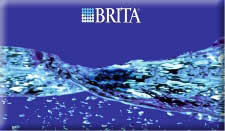|
Water in its natural state is seldom pure, free of bacteria, sparkling clear,
and without an objectionable taste or odor. After water is drawn from a source, it's
piped into a treatment plant. The plant may put the water through one of several
processes, depending on the quality of the water, and on a city's standards.
- Coagulation and settling remove most impurities when the water flows into
the treatment plant, is mixed with chemicals, and is passed into a settling
basin.
- Filtration screens out any remaining particles by passing water through
a filter and into huge reservoirs.
- Disinfection kills disease-carrying bacteria by adding chlorine to the water.
- Other processes, such as aeration, softening, and addition of fluoride,
are also used to remove unpleasant qualities, or to give the
water special qualities.
Large cast iron pipes called water mains carry water all over the city, after
the treated water flows to a pumping station. A sewerage system carries away
used water to be cleaned, treated, and returned to rivers, streams, or lakes.
Home filtrations units are now readily available for personal use. They remove
small traces of metals and minerals and improve the taste of chlorine-treated
water.
|

|

